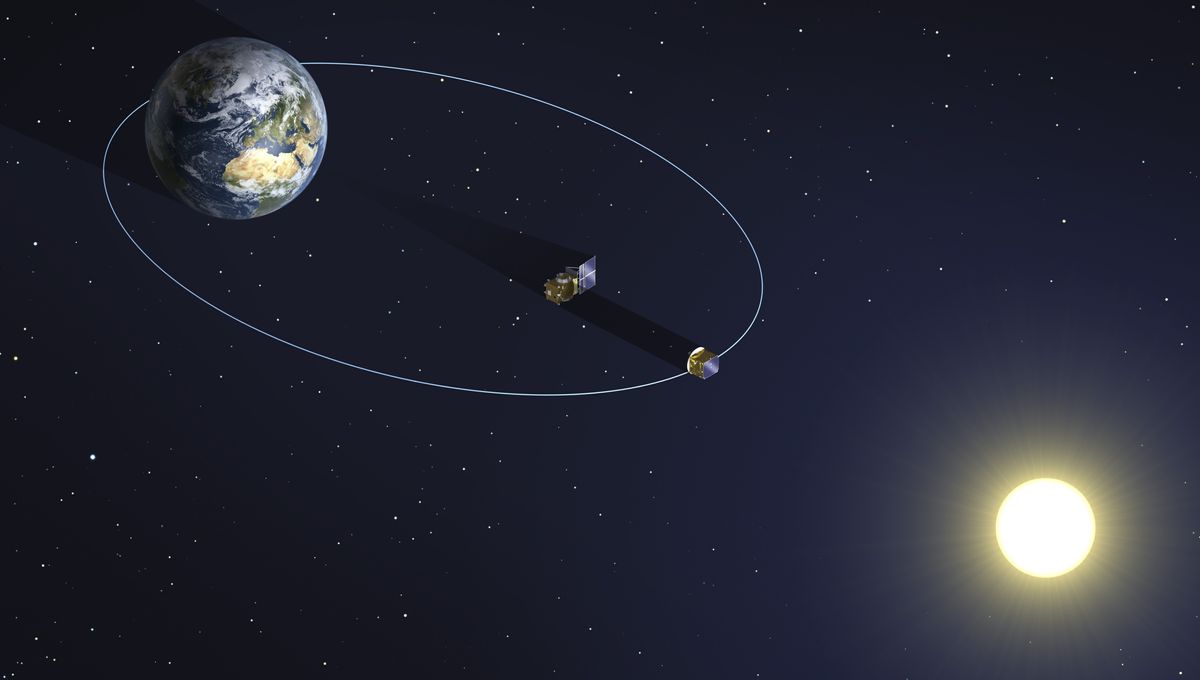
The European Space Agency is about to have a way to get solar eclipses on demand in space, a crucial approach to studying the solar corona. The solar corona is the extremely hot atmosphere of the Sun and has a massive impact on Earth and our technologies, which is why it is important to monitor it.
The mission is called Proba-3 and it consists of two spacecraft flying in formation so that one can be 150 meters (492 feet) sunward, casting a shadow by covering the solar disk perfectly. This is key to observing the corona. The system creates eclipses on demand. Total solar eclipses like the one that crossed North America in April are not just stunning events – they are one crucial way to study the solar corona.
Traditionally, spacecraft or telescopes that study it have a coronagraph, a little disk in the middle that blocks the solar disk. The drawback of this method is that at the edge of the coronagraph you get a bright rim, so you are losing some information on an important part of the solar corona, the part that is closest to the Sun’s surface. Proba-3 will be able to look at the Sun’s corona from just beyond the solar disk to 1.4 million kilometers (870,000 miles) away.
The way to improve on that is to have the coronagraph quite far from the telescope. This is why natural eclipses are ideal with the Moon around 380,000 kilometers (236,000 miles) away. But total solar eclipses don’t happen often enough (on average one every 18 months) to just wait around for them. A proposed mission, called MESOM, will send a spacecraft into orbit to get eclipses every month. While we wait for that, Proba-3 will demonstrate this new approach.
The two spacecraft will be in a peculiar orbit, going from as close to the Earth as 600 kilometers (373 miles) all the way out to 60,530 kilometers (37,600 miles) from our planet’s surface. They will take 19.7 hours to go around the planet. In six of those hours, when the probes are the furthest from Earth, they will be aligned so that the coronal observations can happen. The tight-formation flying is a crucial demonstration for this mission.
The system will help study why the solar corona is hundreds of times hotter than the Sun’s surface, reaching millions of degrees; how the solar wind is accelerated; and the formation of coronal mass ejections – the plasma events that, once they hit the Earth, can damage satellites and cause spectacular aurorae. The mission will also do science when not in formation. The spacecraft will fly through the Van Allen belts, regions of radiation around our planet linked to the solar wind and space weather.
Proba-3 is the fourth of the Proba missions, which have all been technology demonstrations. Why is it “3” and not “4”? The third one was called Proba-V, a small satellite measuring vegetation that was launched in 2013 for an initial two-year mission. It continues to work today. Proba-3 also has a nominal mission duration of two years.
Source Link: How Do You Create A Solar Eclipse In Space On Demand? ESA Is About To Show Us